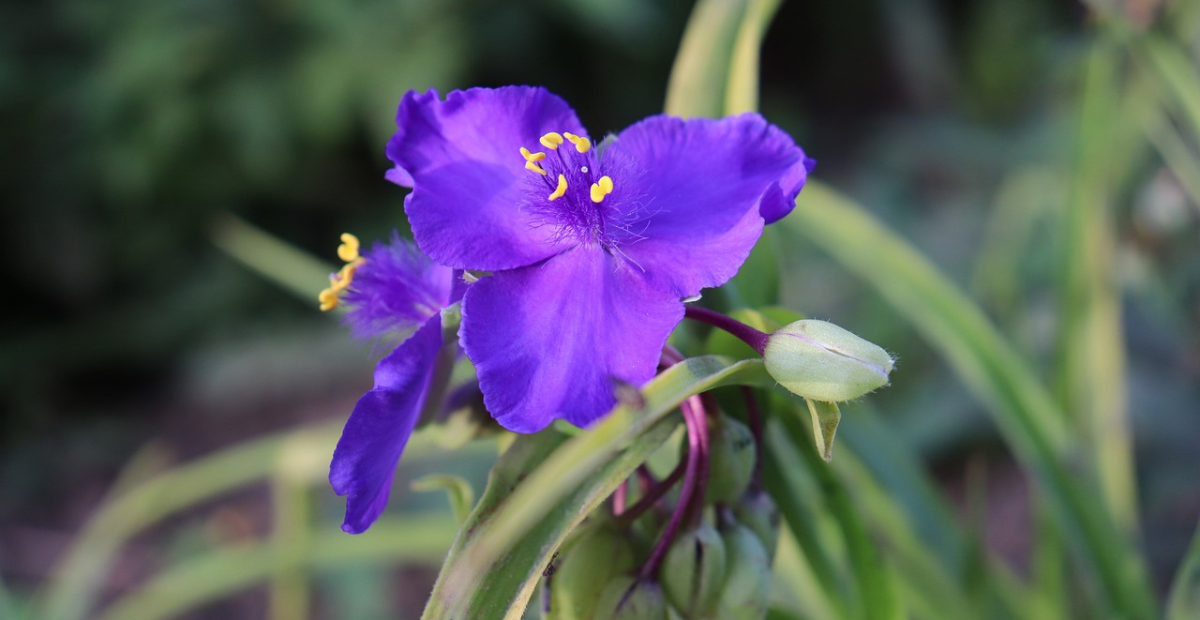Tradescantia, often referred to as the wandering Jew or spiderwort, is a genus of plants that has captivated houseplant enthusiasts and gardeners alike. Known for its stunning foliage and easy care, Tradescantia is perfect for both beginners and seasoned plant lovers. This article will delve into the different types of Tradescantia, including the popular Planta Tradescantia Zebrina and the charming Tradescantia Bubblegum, while also touching upon the unique Nanouk Tradescantia.
Alt text: Beautiful Tradescantia plant showcasing its vibrant leaves.
advertisement
Table of Contents
What is Tradescantia?
Tradescantia is a genus comprising around 70 species of flowering plants, native to the Americas. They are primarily known for their striking variegated leaves, which can feature a range of colors from green to purple and silver. The plants are typically easy to grow and maintain, making them a popular choice for indoor gardening.
The Beauty of Tradescantia
Tradescantia plants are not only visually appealing but also offer several benefits:
- Air Purification: Like many houseplants, Tradescantia helps improve indoor air quality.
- Versatility: They can be grown in pots, hanging baskets, or even as ground cover outdoors.
- Low Maintenance: These plants thrive in a variety of conditions and are relatively forgiving.
Types of Tradescantia
Understanding the different types of Tradescantia can help you choose the right plant for your space. Here are some of the most popular varieties:
1. Planta Tradescantia Zebrina
Planta Tradescantia Zebrina, commonly known as the inch plant, is celebrated for its stunning purple and green striped leaves. The leaves are not only beautiful but also help the plant stand out in any collection.
Care Tips for Planta Tradescantia Zebrina
- Light: Prefers bright, indirect light but can tolerate lower light conditions.
- Water: Water when the top inch of soil feels dry.
- Soil: Use a well-draining potting mix.
Alt text: Planta Tradescantia Zebrina with striking purple stripes.
2. Tradescantia Bubblegum
Tradescantia Bubblegum is a delightful cultivar known for its pastel pink and green leaves. It adds a touch of whimsy to any indoor garden.
Care Tips for Tradescantia Bubblegum
advertisement
- Light: Thrives in bright, indirect light; too much direct sun can scorch the leaves.
- Water: Allow the soil to dry slightly between waterings.
- Soil: A well-draining mix is essential for healthy growth.
Alt text: Vibrant Tradescantia Bubblegum with pastel pink foliage.
3. Nanouk Tradescantia
Nanouk Tradescantia is another stunning variety that has gained popularity due to its unique leaf coloration, featuring shades of pink, white, and green. This variety not only catches the eye but is also known for its resilience.
Care Tips for Nanouk Tradescantia
- Light: Prefers bright, indirect light; avoid prolonged exposure to direct sunlight.
- Water: Water when the soil is dry to the touch.
- Soil: Use a light, well-aerated potting mix.
Alt text: Nanouk Tradescantia showcasing its unique pink and white leaves.
General Care for Tradescantia Plants
Light Requirements
Tradescantia plants thrive in bright, indirect sunlight. Too much direct sunlight can lead to scorched leaves, while too little light can cause the plant to become leggy and lose its vibrant color.
Watering Practices
Water your Tradescantia when the top inch of the soil feels dry. It’s essential to avoid overwatering, as this can lead to root rot. Always ensure that your pot has drainage holes to allow excess water to escape.
Soil and Fertilization
Using a well-draining potting mix is crucial for Tradescantia. A mix that retains some moisture but allows excess water to drain away is ideal. During the growing season (spring and summer), consider fertilizing your Tradescantia every few weeks with a balanced liquid fertilizer.
Pruning and Propagation
Pruning is beneficial for maintaining the shape of your Tradescantia. You can easily propagate these plants by taking stem cuttings and placing them in water or soil until they root.
Common Pests and Diseases
advertisement
While Tradescantia is relatively resilient, it can still be susceptible to pests such as spider mites, mealybugs, and aphids. Regularly check your plants for signs of infestations and treat them with insecticidal soap if necessary.
Why Choose Tradescantia?
With their vibrant colors and unique patterns, Tradescantia plants are a fantastic addition to any indoor or outdoor garden. Their low maintenance and adaptability make them suitable for a variety of growing conditions, whether you’re an experienced gardener or a beginner.
The Aesthetic Appeal
The aesthetic appeal of Tradescantia is undeniable. From the deep purples of Planta Tradescantia Zebrina to the soft hues of Tradescantia Bubblegum, these plants offer something for everyone. They can be used to create beautiful focal points in your home or to add depth to your existing plant collection.
Conclusion
In conclusion, Tradescantia is a versatile and beautiful genus of plants that can enhance any space. Whether you opt for the striking Planta Tradescantia Zebrina, the playful Tradescantia Bubblegum, or the eye-catching Nanouk Tradescantia, you can enjoy the unique beauty and ease of care these plants offer.
By incorporating Tradescantia into your home, you’re not just adding a plant; you’re bringing a splash of color and life into your environment. Happy gardening!
For more information on caring for Tradescantia plants, check out Gardening Know How for expert tips and advice.


